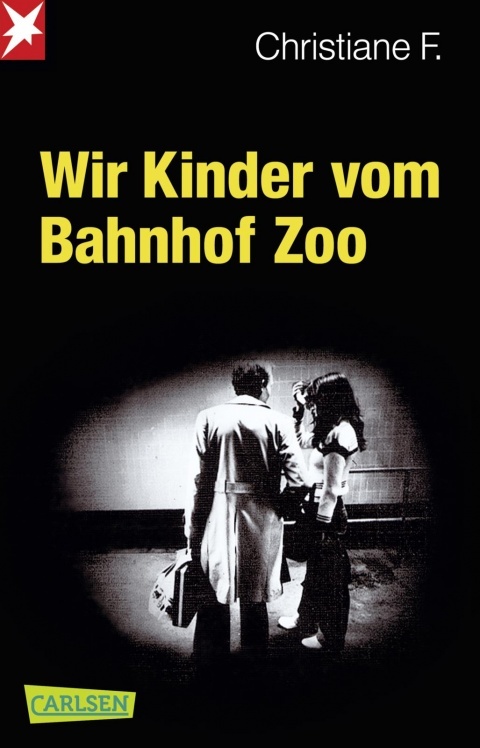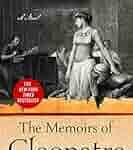In the realm of autobiographical narratives, few works resonate with the haunting echoes of lost youth as poignantly as “Wir Kinder vom Bahnhof Zoo” by Christiane V. Felscherinow. Rooted in the gritty tapestry of 1970s Berlin, Felscherinow’s poignant memoir unveils the stark realities faced by a generation ensnared in the throes of addiction, rebellion, and the quest for identity. “lost Innocence” invites readers to traverse the turbulent landscape of Felscherinow’s childhood, a poignant exploration of the dark corners of urban life that challenges the idealized notions of adolescence. As we delve into this review, we will unravel the layers of Felscherinow’s narrative, reflect on its cultural meaning, and consider the enduring messages that continue to resonate in our contemporary landscape. Through her unflinching gaze, Felscherinow not only chronicles the personal journey of survival and resilience but also offers a broader commentary on the societal issues that shape the lives of countless individuals. Join us as we navigate the tumultuous waters of “Wir kinder vom Bahnhof Zoo,” where innocence is not merely lost but transformed into a powerful testament of human experience.
Exploring the Heartbreaking Reality of Addiction in Urban Youth
In her compelling narrative, Christiane V. Felscherinow unearths the plight of urban youth trapped in the clutches of addiction.Her firsthand account portrays a stark landscape where innocence is eclipsed by desperation, illuminating the struggles faced by those affected. The story intricately weaves together various elements of life on the streets, painting a somber yet honest picture that resonates deeply with readers. Key themes emerge throughout the narrative, including:
- The allure of escape: Many young individuals turn to substances as a means of transcending their bleak realities.
- The failure of societal structures: Felscherinow highlights how inadequate support systems contribute to a cycle of addiction.
- The ripple effect: The impact of addiction extends beyond the individual, affecting families and communities.
The emotional depth of the book is amplified by its raw honesty, revealing the cracks in humanity’s facade. By showcasing the stark contrast between fleeting moments of joy and the grip of despair, felscherinow urges readers to confront the uncomfortable truth about addiction. A profound aspect of this narrative lies in its exploration of friendship and loyalty among those fighting their battles together. In a world where connection is frail, the bonds formed in adversity become both a source of strength and a painful reminder of lost potential. To further illustrate these connections,the following table summarizes the core relationships depicted in the story:
| Character | Relationship | Impact |
|---|---|---|
| christiane | Best friend | Support in addiction |
| Detlef | Companion | Shared experiences |
| Parents | Estranged | Source of pain |
The Unvarnished Truth: Insights into the Life at Bahnhof Zoo
In the gritty backdrop of Berlin’s Bahnhof Zoo, the narrative unfolds with raw honesty, encapsulating the struggle of youth against the pulsating rhythm of addiction and survival. Christiane V. Felscherinow’s memoir *Wir Kinder vom Bahnhof Zoo* offers an unfiltered glimpse into a world where innocence is rapidly stripped away. The lives of the children and teens echo the haunting effects of societal neglect, revealing a harsh reality that transcends mere words. Key insights from the book include:
- The Impact of Addiction: A visceral portrayal of how heroin addiction ensnares the young and vulnerable.
- Friendship in Adversity: Deep bonds forged in the crucible of hardship, illustrating the strength found in community, however fractured.
- Socio-economic Commentary: A critique of a society that fails to protect its most vulnerable members, sparking essential dialogues about responsibility and care.
The stark contrast between fleeting moments of joy and the suffocating despair of drug dependency reveals the complex dynamics of youth culture in urban spaces. Felscherinow’s powerful prose dose not shy away from depicting violence, betrayal, and the desperate search for love and acceptance. The following table encapsulates major themes illustrated in the memoir:
| Theme | Description |
|---|---|
| Isolation | A poignant exploration of emotional and physical detachment from society. |
| Loss | A recurring motif symbolizing the loss of childhood and dreams amid chaos. |
| Resilience | Examples of strength and spirit in the face of overwhelming odds. |
A compelling Narrative: The Power of Emotional Storytelling
At the heart of “Wir Kinder vom Bahnhof Zoo” lies a raw and unfiltered look into the lives of a group of adolescents grappling with the harsh realities of addiction and urban life. Christiane V. Felscherinow skillfully weaves together her personal experiences into a gripping narrative that illuminates the struggles of youth caught in a world of despair and lost hopes. Through vivid descriptions and poignant anecdotes, she invites readers to walk alongside her, experiencing the highs and lows of addiction, friendships, and the desperate search for identity amid chaos.
Felscherinow’s storytelling prowess is especially evident in her ability to evoke deep emotional responses from her audience. The use of first-person perspective adds a layer of intimacy, inviting readers to empathize with her pain and triumphs. Key elements of her narrative include:
- Authenticity: the depiction of real-life events resonates with those familiar with the struggles of urban youth.
- Complex Characters: Each individual in her story is multi-dimensional, showcasing the beauty and darkness within.
- Emotional Depth: The raw honesty of her experiences elicits profound reflection on societal issues surrounding addiction.
This compelling storytelling not only sheds light on personal trauma but also serves as a mirror reflecting broader societal challenges, making it a work that is both impactful and essential reading.
Character Study: Protagonists as Symbols of Lost Innocence
The characters in ”Wir Kinder vom Bahnhof Zoo” serve as poignant representations of lost innocence,deeply entrenched in the harsh realities of life that unfold in the streets of Berlin. With each protagonist grappling with the weight of their circumstances, readers witness the gradual erosion of their childhood dreams and ideals. Christiane, the central character, embodies this theme as she navigates the turbulent waters of adolescence while succumbing to the allure of drugs and the escape they promise. Her journey unveils a stark contrast between the carefree laughter of youth and the creeping shadow of addiction, inviting readers to reflect on the fragility of innocence in a world rife with temptation and despair.
Other characters in the narrative further illustrate this disintegration of innocence, each representing different facets of this profound loss. Sonja, who initially appears as a beacon of hope, spirals into the depths of her struggles, showcasing the emotional turmoil that accompanies the loss of youthful naivety. The stories often intersect, portraying a collective descent into a reality marked by betrayal, hopelessness, and fleeting moments of joy. As the protagonists evolve through their trials, they transform into symbols of a generation’s battle against societal neglect and the inevitability of change, serving as a haunting reminder that innocence, once lost, becomes a poignant memory of what could have been.
| Character | Symbol of Lost Innocence | Key Struggle |
|---|---|---|
| Christiane | Childhood dreams | Addiction |
| Sonja | Hope | Emotional turmoil |
| Others | Collective despair | Societal neglect |
The Harsh Environment: Setting as Character in the Narrative
The unforgiving landscape of Berlin in the late 1970s serves as a crucial catalyst in Christiane V. Felscherinow‘s gripping narrative. The city’s chaotic streets, marked by a lingering sense of decay and urban desolation, act almost as a silent yet menacing character that shapes the lives of the young protagonists.Within this harsh environment, the challenges of survival overshadow the innocence of youth, revealing a stark reality where dreams clash with the gritty undertones of addiction and despair. The constant presence of the railway station symbolizes both departure and entrapment, representing not only a physical space but also the emotional turmoil of the characters, who are perpetually caught between hope and hopelessness.
As the story unfolds, we witness the deep psychological impact that this environment exerts on the youth navigating it. The harshness manifests in several poignant ways:
- Isolation: The oppressive atmosphere contributes to a profound sense of loneliness,as characters seek connection yet often find themselves further alienated.
- Desperation: Street life pushes the characters to the brink, forcing them to confront their vulnerabilities and ultimately leading them to make tragic choices.
- Loss of Innocence: The stark realities of addiction and crime strip away the naiveté of adolescence, showcasing a grim coming-of-age.
Ultimately, the environment not only reflects but amplifies the internal struggles of the characters, transforming the backdrop of Berlin into a living entity that mirrors their fragile state.This complex interplay between setting and character elevates the narrative, turning it into a haunting exploration of youth engulfed by darkness.
Impactful Themes: Delving into Friendship,Betrayal,and Survival
In “Wir Kinder vom Bahnhof Zoo,” the themes of friendship, betrayal, and survival intertwine to create a poignant narrative that resonates deeply with its audience. The friendships formed among the young protagonists often act as both a source of support and a catalyst for heart-wrenching choices. Amidst the chaos of their tumultuous lives, these bonds reveal the comfort of companionship, as well as the painful reality of trust when circumstances change. Betrayal emerges as a bitter undercurrent, highlighting how desperation can twist relationships, leading to choices that fracture bonds and alter lives irrevocably. In this unforgiving backdrop,the innate human desire for connection clashes with the searing need to survive,illustrating the profound complexities of youth in a crumbling society.
The struggle for survival is underscored by the characters’ encounters with addiction and the harsh realities of urban life. Their daily existence is a tightrope between moments of joy and despair, depicted in rich detail that invites readers to witness their journey.In analyzing the characters’ choices, we see how their circumstances force them into morally ambiguous situations, raising questions about agency and a lost sense of innocence. This juxtaposition is further emphasized in the following table, which encapsulates the emotional weight of these themes:
| Theme | Character Actions | Consequences |
|---|---|---|
| Friendship | Supporting each other during hardship | Temporary solace in a chaotic world |
| Betrayal | Turning against friends for survival | Loss of trust and deep emotional scars |
| Survival | Engaging in risky behaviors | Hazardous living conditions and moral dilemmas |
Through these themes, “Wir Kinder vom Bahnhof Zoo” masterfully encapsulates the struggle of youth facing overwhelming odds, compelling readers to confront the realities of friendship, betrayal, and survival in a way that is both heart-wrenching and thought-provoking.
The Role of Societal Neglect in Shaping Young Lives
The haunting narrative captured in *Wir Kinder vom Bahnhof Zoo* illustrates the profound effects of societal neglect on the vulnerable youth of Berlin in the 1970s. In this raw portrayal, the characters drift through their turbulent world, often shaped by external forces more powerful than themselves. As they navigate through the unforgiving city streets, they encounter a series of challenges that stem from a community that fails to protect and nurture its young. This neglect is not just physical but deeply emotional, leaving them to grapple with feelings of abandonment and unworthiness.
Throughout the book, several key themes emerge, highlighting the consequences of a society turned away from its youth:
- isolation: Young individuals feel increasingly alone, as families and institutions sever connections that could have provided support.
- Desperation: The need to escape harsh realities leads many to substances, pitting them against their own innocence.
- Loss of Identity: The absence of guidance results in a disjointed sense of self for these children, as they struggle to define their roles within such a neglectful environment.
In examining these elements, it’s evident that the systemic failures to address and nurture the needs of these children are at the core of their struggles. The book serves as a stark reminder of the crucial responsibility societies hold in fostering safe, nurturing spaces for the youth. Only by ensuring support and visibility for these young lives can we hope to break the cycle of neglect and empower future generations.
Real-Life Consequences: When Art Mirrors Reality
In “Wir Kinder vom Bahnhof Zoo,” Christiane V. Felscherinow paints a poignant picture of youth grappling with the harsh realities of addiction and societal abandonment. The raw honesty permeating the narrative serves to remind us that the struggles faced by the characters are not mere fiction but echoes of the world around us. As the story unfolds, readers witness the dramatic transformation of young lives caught in a whirlwind of despair and fleeting escapism, highlighting the fragility of innocence. This portrayal underscores the importance of recognizing the real-life consequences of addiction—effects that ripple through families, communities, and futures.
Felscherinow’s powerful exploration of these themes compels us to confront uncomfortable truths about societal neglect and the struggle for identity amidst chaos. Key aspects that resonate from the book include:
- Loss of Childhood: Characters are thrust into adult responsibilities far too early,stripped of youthful joys.
- Abandonment: The indifference of society and family bonds disintegrate, leaving children to fend for themselves.
- Addiction’s Grip: The cycle of dependency acts as both an escape and a prison for the youth.
As we reflect on these elements, it becomes evident that the novel serves as a critical mirror to the societal issues of the time—and, tragically, our present. The stark reality depicted by Felscherinow allows us to grasp the full implications of ignored struggles within urban jungles, urging a conversation that transcends literary confines and spills into our collective conscience.
The power of Voice: Felscherinow’s Authentic Perspective
Felscherinow’s narrative voice resonates with an authenticity that pierces the veil of societal norms, shedding light on the turbulent lives of adolescents navigating the shadows of addiction and despair. Her candid exploration of themes such as loss, betrayal, and resilience offers a raw look into the struggles faced by her peers. By recounting her personal experiences, she transcends mere storytelling; she forges a powerful connection with readers, inviting them to confront uncomfortable truths about society’s failures. The haunting echoes of her past serve as a reminder that innocence can be lost in an instant,leaving a lasting impact on both the individual and the community.
The book’s emotional intensity is amplified by its unflinching honesty. Felscherinow captures moments of fleeting joy amidst the chaos, illustrating a duality that many young people grapple with.This complexity is reflected in elements such as:
- Dynamic Character Portrayals: Each individual’s story adds depth to the collective experience.
- Vivid Imagery: Rich descriptions transport the reader to the heart of 1970s Berlin.
- Confrontational Language: Felscherinow does not shy away from the harsh realities of addiction.
Her narrative style is both poignant and compelling, enriching our understanding of the human condition during a time and place fraught with challenges. In doing so, Felscherinow not only preserves the stories of her generation, but also ignites discussions that are vital in today’s world.
Literary Techniques: Crafting a Gripping True Story
Felscherinow masterfully employs a range of literary techniques to immerse readers in the visceral and frequently enough harrowing world of adolescence amidst addiction and despair. Through the use of vivid imagery, she paints a stark landscape of Berlin’s underbelly, allowing readers to feel the cold pavement beneath the characters’ feet and the weight of their choices. her use of stream-of-consciousness narration is particularly striking, as it mirrors the chaos of the young minds grappling with their reality.Capturing fleeting thoughts and raw emotions,Felscherinow creates an immediate link between the reader and the tumultuous inner lives of her protagonists.
The dialog in “Wir Kinder vom Bahnhof Zoo” is both authentic and poignant, reflecting the harsh realities faced by the youth of the time. Felscherinow intersperses moments of humor amid the darkness, which serves to humanize her characters and create a deeper emotional resonance. Additionally, the juxtaposition of childhood innocence with the harsh truths of addiction further amplifies the narrative’s impact. several key themes emerge throughout the story, including:
| Theme | Description |
|---|---|
| Loss | Evident in the characters’ struggles with addiction and the impact on their relationships. |
| Friendship | Portrayed through the bonds formed in adversity, highlighting both support and betrayal. |
| Hope | Moments where characters seek redemption and meaning amidst chaos. |
Cultural Significance: Reflecting Germany’s Dark Past
Christiane V. Felscherinow’s Wir Kinder vom Bahnhof Zoo serves as a stark reflection of a turbulent period in german history.The narrative transports readers to a time shadowed by social unrest, the aftermath of World War II, and the pervasive struggles of youth in post-war berlin. Through the lens of addiction and survival,the story encapsulates the fragility of innocence against a backdrop of societal decay. This work not only documents individual struggles but also mirrors the collective trauma experienced by a generation grappling with the remnants of a devastating past. It highlights the disillusionment prevalent among the youth as they navigate their identities in a city haunted by its own history.
The characters within the memoir exemplify how the scars of the past influence their present, showing that the lessons of history are often unlearned. In this context, the characters’ encounters can be understood as a haunting reminder of the dangers of neglect, presenting a critical view of societal failures. Reflecting on their experiences, the narrative opens a dialogue about the importance of acknowledging history to prevent the repetition of past mistakes. The interconnectedness of personal and historical trauma reinforces the need for resilience as young individuals in this setting strive for hope amid chaos. This poignant narrative ultimately serves as a catalyst for discussion around societal responsibility and the urgent need for change.
Recommendations for Further Reading on Youth and Addiction
For readers seeking to deepen their understanding of youth and addiction, a range of insightful resources can illuminate the multifaceted nature of these issues. Consider exploring the following books that provide personal narratives, research findings, and cultural critiques:
- “Jeremy’s Story” by W. W. New – A poignant memoir that highlights the struggles of addiction through a young person’s journey.
- “Cracked Not Broken: Surviving and Thriving After a Suicide Attempt” by Kevin Hines – an inspiring account offering a unique perspective on mental health and resilience.
- “Addiction Recovery Management: Theory, Research, and Practice” by John F. Kelly and William L. White – A comprehensive overview of the evolving frameworks surrounding addiction recovery.
- “The Addictive Brain” by michael A. F. Morgan - A detailed exploration of the neuroscience behind addiction, particularly in adolescents.
In addition to literature, various documentaries and films shed light on the realities of youth confronting addiction. Noteworthy titles include:
| title | Format | Focus |
|---|---|---|
| “Kids” | Film | Life of urban teens caught in the throes of substance abuse. |
| “The Other Side of Addiction” | Documentary | A deep dive into personal stories of recovery from youth addiction. |
| “Amy” | Documentary | A heartbreaking look at the life of singer Amy Winehouse, touching on addiction. |
Afterword: The Legacy of Christiane V. Felscherinow and her Story
Christiane V. Felscherinow’s narrative in “Wir Kinder vom Bahnhof Zoo” transcends the confines of a personal memoir,emerging as a poignant mirror reflecting societal issues that still resonate today. Her unflinching honesty in recounting the harrowing struggles of addiction, adolescence, and the search for identity serves as a testament to the resilience of the human spirit. In this regard, her legacy is profound, illuminating the darker corners of urban life and the challenges faced by marginalized youth. The impact of her story is evident in various facets, including:
- Awareness: Encouraging conversations about addiction and mental health.
- Empathy: Fostering understanding of the plight of those who struggle with similar issues.
- Inspiration: Motivating others to share their stories and advocate for change.
Moreover, Felscherinow’s tale has inspired adaptations and critiques across different mediums, further solidifying her influence on popular culture. The narrative continues to spark discussions about the fragility of youth and the societal structures that can either uplift or ensnare them. To delve deeper into her legacy, one might consider the following comparisons between the themes explored in her work and contemporary societal challenges:
| Theme | Felscherinow’s Exploration | Contemporary Parallels |
|---|---|---|
| Addiction | The grip of drugs on youth | Opioid crisis and substance abuse |
| Isolation | Alienation in urban settings | Digital isolation and social media dynamics |
| Identity | Searching for self-worth | The impact of societal expectations on identity |
Ultimately, the enduring relevance of Christiane V. Felscherinow’s narrative lies not only in its raw emotion and authenticity but also in its ability to transcend time and continue to resonate with future generations. Her reflections compel society to confront uncomfortable truths, urging a collective responsibility to support and uplift those grappling with similar struggles.
Redemption through Storytelling: understanding the Author’s Journey
In “Wir Kinder vom Bahnhof Zoo,” Christiane V. Felscherinow intricately weaves a tapestry of pain and redemption, reflecting the tumultuous journey of youth caught in the clutches of addiction. The author immerses readers in her early life experiences, painting a vivid picture of the vibrant yet dangerous Berlin of the 1970s. Through her candid revelations, Felscherinow unveils the stark contrast between the innocent aspirations of youth and the hard-edged realities of drug culture. Her storytelling highlights key themes,such as:
- The loss of childhood: An exploration of innocence stripped away by external circumstances.
- Friendship and betrayal: The dual nature of relationships formed in the crucible of hardship.
- Struggle and survival: An unflinching look at the lengths to which one must go to reclaim a semblance of life.
Felscherinow’s narrative serves not only as a memoir but also as a resounding call to empathy and understanding. Her journey resonates deeply, illustrating how storytelling can act as a form of catharsis and healing. The book encapsulates the complex interactions between despair and hope, suggesting that art can be a lifeline for those navigating turbulent waters. In examining her past, the author beckons readers to confront uncomfortable truths, urging a deeper consideration of the societal structures that contribute to such tragedies.The authenticity of her journey invites reflection on personal choices and collective responsibility, ultimately championing the inherent power of storytelling for redemption.
Insights and Conclusions
“Lost Innocence: A Review of ‘Wir Kinder vom Bahnhof Zoo’ by christiane V. Felscherinow” offers a profound exploration of youth, vulnerability, and the stark realities that shadow the journey toward adulthood. Felscherinow’s candid reflections serve not only as a poignant narrative of her own life but also as a mirror reflecting the struggles experienced by many. Through her unflinching honesty, the review invites readers to confront uncomfortable truths about addiction, societal neglect, and the complexities of human resilience.As we turn the final pages, we are left to ponder the delicate balance between innocence and experience, and the indelible impact that our environments can have on our formative years. In dissecting Felscherinow’s work, we are compelled to consider how these themes resonate in our own lives, urging us to remain vigilant in our quest for understanding and empathy.While the story might potentially be rooted in the past, its echoes linger on, reminding us that every child’s story deserves to be told and heard.















